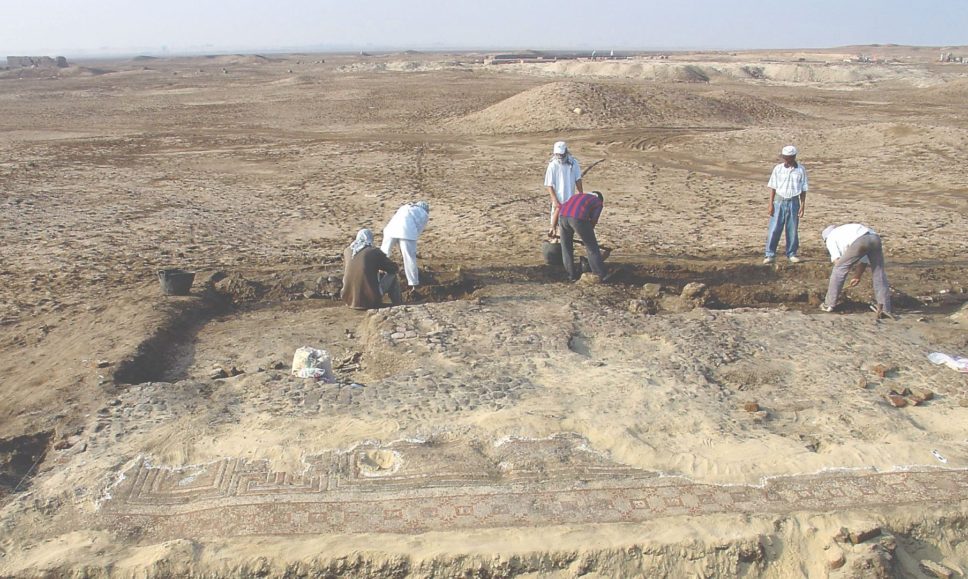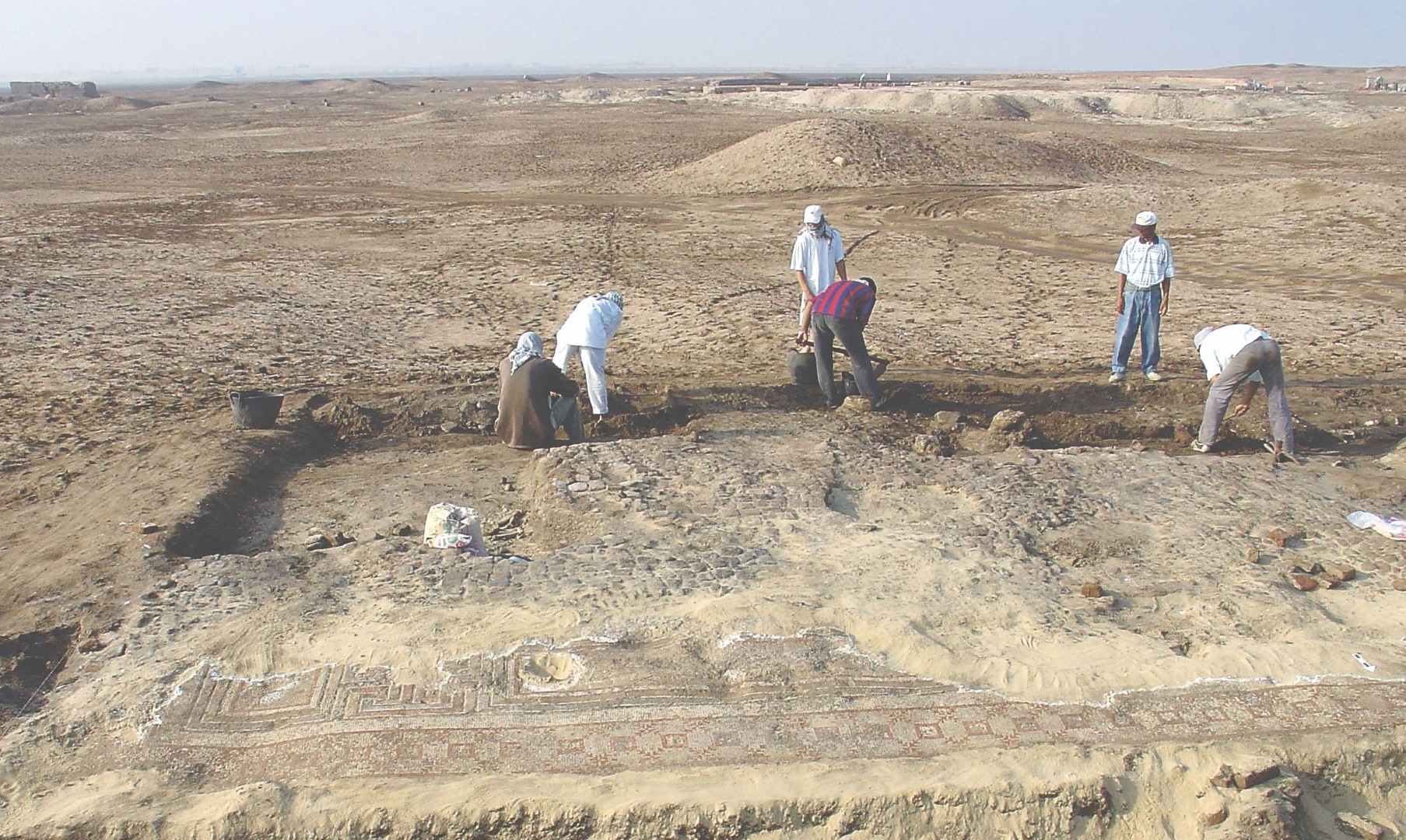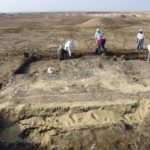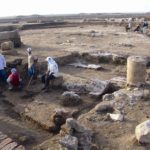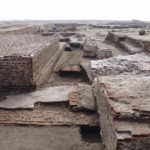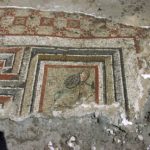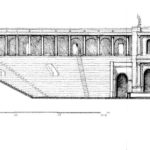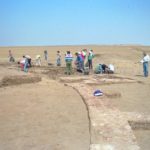Pelusium
Tell Farama
Tell el-Farama
-
Project name:
Polish-Egyptian Mission at Tell el-Farama (Pelusium)
-
Type of site:
Ancient town from the Hellenistic-Roman period
Location:
Egypt
North Sinai, approximately 20 km east of the Suez CanalDating:
– 3rd century BC – mostly ceramic objects from the layer beneath the theater
– 1st century BC/1st century AD – architectural remains discovered beneath the foundations of the theater
– End of the 2nd/beginning of the 3rd century AD – so-called Great Theater
– 4th–5th century AD – house with a mosaic
– The youngest finds dated to the beginning of the 7th century
Most interesting finds:
– research in the area of the so-called Great Theater
– residential buildings with a mosaic dated to the 4th century AD
History of research:
Dates of PCMA mission’s work:
2003–2009
Type of research:
Excavations, geophysical research
Directors:
Michał Gawlikowski
Krzysztof Jakubiak
Co-operating institutions:
– Polish Centre of Mediterranean Archaeology, University of Warsaw
– Egypt’s Supreme Council of Antiquities (SCA)
Additional information:
Contemporary research in Pelusium was a part of an international campaign aiming to study several sites in North Sinai. The large-scale project was connected with the building of the Saalam (Peace) Canal, which was meant to irrigate the barren region with the water from the Nile. As a result, several teams from different countries started work in the Pelusium agglomeration at the beginning of the 1990s. The Polish team excavated the Roman theater located in the central part of the city.
Description of the site and research:
The site lies on the border of two governorates: Port Said and North Sinai, approximately 20 km east of the Suez Canal and 3.5 km in a straight line from the Mediterranean Sea. The Pelusium agglomeration extends latitudinally for 4 km. The Pelusium proper is a small spindle-shaped hill called today Tell el-Farama. To the east of it, in the suburbs of Pelusium, lies another hill, Tell el-Makhzan, and further to the east, a relatively flat area called Tell el-Kanais.
Polish archaeologists visited the site for the first time in May 1993. Wojciech Kołątaj documented then the visible remains of the theater. In the following years, an Egyptian team directed by the discoverer of the monument, Ahmed al-Tabai, continued work in the theater. Peter Grossmann from the Deutsches Archaologisches Institut in Cairo was asked to participate. The researchers managed to hypothetically reconstruct the layout of walls in the scenae frons and uncover the preserved parts of the cavea.
From 2003 to 2008, a Polish-Egyptian team worked at the site, at first directed by Michał Gawlikowski and later by Krzysztof Jakubiak. Its main aim was to excavate the immediate surroundings of the theater and to create a plan for the protection and basic reconstruction of the building. During archaeological work, parts of earlier buildings (presumably including baths) were discovered under the parodos. Below them was a rubbish dump from the Ptolemaic period, which clearly shows that before the Roman period, this area was outside the city.
After completing the excavations in the theater, work was continued several dozen meters to the north, near the silted-up Pelusian branch of the Nile. Among badly damaged walls and floors, a unique late-antique mosaic with the depiction of water birds was found. It presumably decorated an urban villa.
The geophysical survey conducted in 2008 by Tomasz Herbich and his team in the concession area turned out to be very significant for the study of the whole Pelusium agglomeration. It allowed for the reconstruction of the street grid of the central part of Pelusium, in which the theater fitted well, and the determination of the size of the other city districts. Additional geophysical prospection was carried out in 2009.
Gawlikowska, K. (2017). Glass from the Tell Farama/Pelusium excavations, Polish Archaeology in the Mediterranean, 26(1), 619–660, DOI: 10.5604/01.3001.0012.1847
Jakubiak, K. (2008). Pelusium, still Egyptian or maybe Oriental town in the Western Synai. Results of the last excavations on the Roman city. In Proceedings of the 5th ICAANE Conference (pp. 221–236). Madrid.
Jakubiak, K. (2008). Tell Farama (Pelusium): Preliminary Report after the Fifth Season of Fieldwork. Polish Archaeology in the Mediterranean, 18, 113–117.
Wasilewska, O. (2008). Some Lamps from Tell Farama (Pelusium). Polish Archaeology in the Mediterranean, 18, 118–125.
Jakubiak, K. (2006). Tell Farama (Pelusium), Report on the third and four seasons of Polish-Egyptian excavations. Polish Archaeology in the Mediterranean, 17, 125–135.
Jakubiak, K. (2005). Tell Farama (Pelusium), Preliminary Report on Second Season of Polish-Egyptian Excavations. Polish Archaeology in the Mediterranean, 16, 61–68.
Maślak, S. (2005). Some Terracotta Figurines from Tell Farama (Pelusium). Polish Archaeology in the Mediterranean, 16, 69–72.
Gawlikowski, M. (2004). Tell Farama (Pelusium), Preliminary Report on a Season of Polish-Egyptian Excavations. Polish Archaeology in the Mediterranean, 15, 67–72.
Jakubiak, K. (2004). Tell Farama, Preliminary Remarks on the Stratigraphy and Pottery. Polish Archaeology in the Mediterranean, 15, 73–75.
Selected site bibliography:
E. H. Ibrahim, M. R. Sherif, A. A. Al-Metwally, (1998). Shallow geophysical investigations on Tell el-Farama, Northwest Sinai, Egypt, Archaeological Prospection 5, 91–100
Gallery:
-
1. Excavations in the residential quarter. Uncovering a mosaic in the late Roman villa / Wykopaliska na terenie zabudowy mieszkalnej. Odsłanianie mozaiki w willi późnorzymskiej (Fot. J. Iwaszczuk)
-
2. Excavations in the area of the pulpitum / Wykopaliska w obrębie pulpitu scenicznego (Fot. K. Jakubiak)
-
3. Brick walls of the theater building. View of the parodos from the west. Thanks to the discovery of the brick structures of the pulpitum and orchestra, the appearance of the theater could be reconstructed / Ceglane mury budowli teatralnej. Widok od zachodu na parodos. Odkrycie ceglanych konstrukcji pulpitu scenicznego i orchestry pozwoliło na opracowanie projektów rekonstrukcji (Fot. K. Jakubiak)
-
4. Mosaic in the late Roman villa after cleaning / Odsłonięta mozaika w willi późnorzymskiej (Fot. J. Iwaszczuk)
-
5. Theoretical reconstruction of the theater in Pelusium / Rekonstrukcja teoretyczna teatru w Peluzjum (Rys. M. Smoła)

